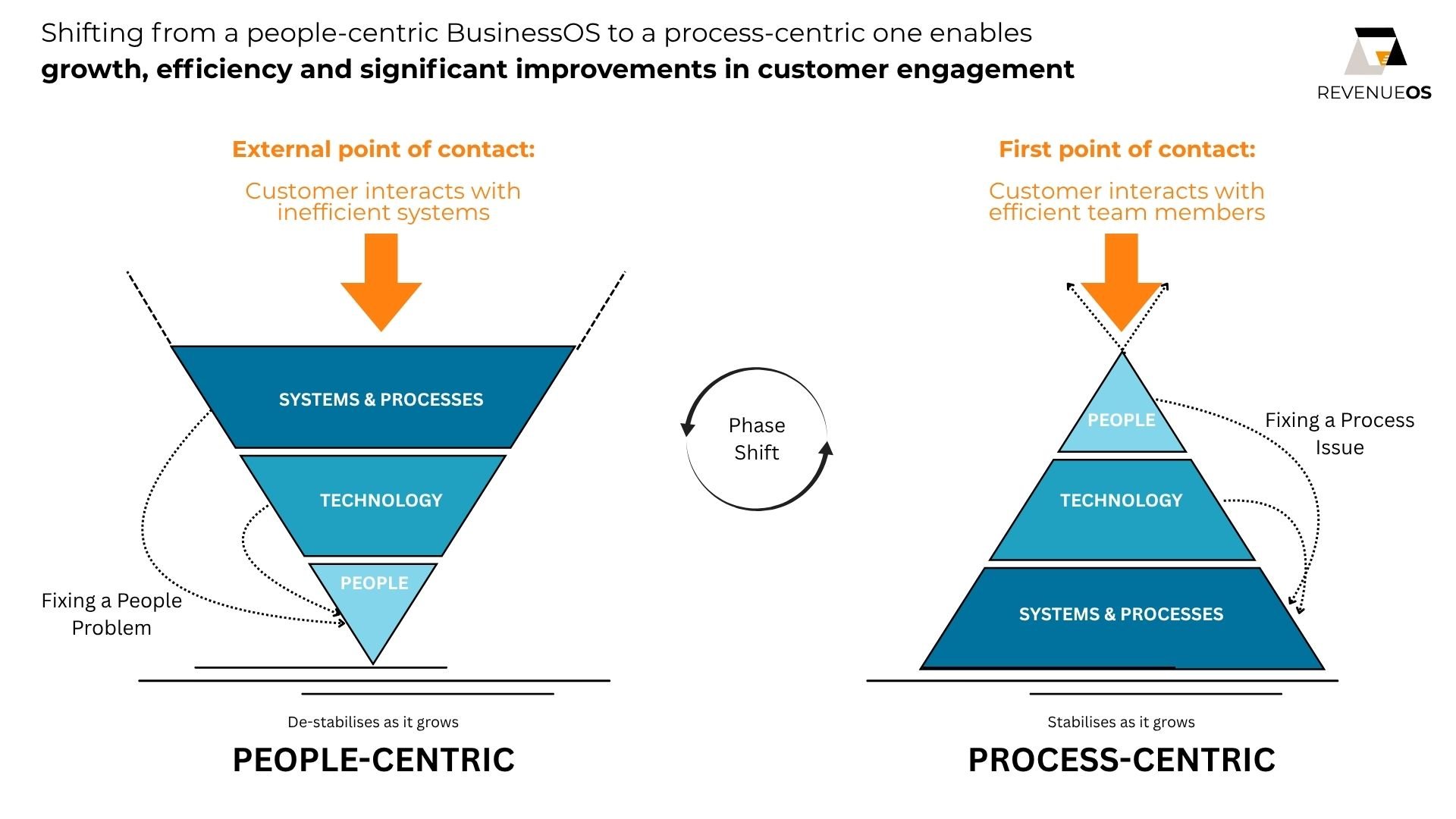The Shift from People-Centric to Process-Centric: Why More Businesses Are Hitting a Growth Ceiling
Over the past few months, as I’ve sat down with business owners and leadership teams across Ireland & the UK, one pattern keeps emerging. Many companies are reaching a tipping point where their current way of working is quietly limiting growth, increasing customer churn, and adding mounting internal pressure.
These are businesses that have grown successfully to date, often founder-led, with 50, 100, sometimes even 200 employees. And yet, despite their success, there’s an increasing sense of fragility. A sense that everything works - until it doesn’t.
I keep hearing phrases like:
“If Joe got hit by a bus, we’d be in serious trouble.”
“We’re constantly firefighting - it feels like I’m the kid with my finger in the dam holding back disaster.”
“We’re growing, but the cracks are getting wider, not smaller.”
What they’re describing is something we see again and again: businesses that have grown organically around strong people, but haven’t yet made the shift to become truly system-led.
The Limits of People-Centric Growth
In a people-centric operating model, growth often relies on key individuals who hold critical knowledge, fix broken processes on the fly, and carry operational risk on their shoulders. As the business grows, these cracks widen. Every new customer, product or process simply adds more strain.
Teams become stretched.
Leaders worry about key person dependencies.
Customer experience becomes inconsistent.
Growth becomes increasingly fragile.
And critically, the business starts to destabilise just as it scales.
The Rise of System-Centric Competitors
At the same time, many of these businesses are now finding themselves competing against newer, system-driven companies. These competitors are designed from the ground up with well-architected processes, embedded technology, and a clear separation of roles and responsibilities. They’re not burning out staff just to keep the lights on. Their systems carry the load, so their people can focus on growth.
And they move fast.
The outcome? The system-driven players are quietly taking market share, winning customers, and scaling efficiently.
The Phase Shift: Moving to a Process-Centric Operating Model
The good news is that most businesses can make the shift - but it requires conscious design.Shifting from PEOPLE-CENTRIC business design to PROCESS-CENTRIC allows customers & team members to engage directly, supported by a solid foundation of technology and efficient processes.
This is exactly the work we’ve been doing at RevenueOS. Helping leadership teams:
Rebuild from the bottom up on a foundation of clear processes.
Deploy technology to enable those processes (rather than adding more tech for tech’s sake).
Create systems that work for the team, rather than teams working for the system.
Free up team capacity, reduce burnout, and unlock growth that is scalable and sustainable.
In many of the businesses we’ve supported recently, this shift has delivered:
Efficiency gains equivalent to 10% of annual turnover.
Revenue growth capacity of 15% or more.
Significant reductions in operational risk and key-person dependencies.
Every business hits this point eventually. Some catch it early. Some wait until cracks become critical failures. And worse still, some wait until their system-thinking competitor chips away at them until they fall apart.
If you’re starting to feel the pressure, you’re not alone - but you don’t need to keep patching leaks or mopping spills.
If you’d like to explore how this applies to your business, I’d be very happy to have an initial conversation. Drop me a note at richard@therevenueos.com to arrange a call.


